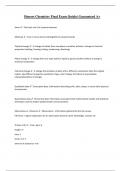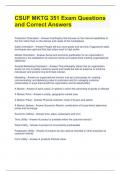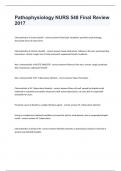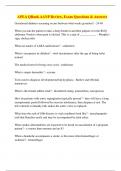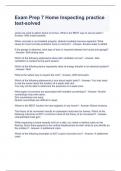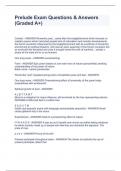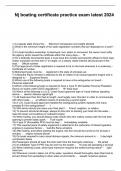Exam (elaborations)
Honors Chemistry Final Exam Quizlet Guaranteed A+
- Course
- Institution
Honors Chemistry Final Exam Quizlet Guaranteed A+ Atom ️The basic unit of a chemical element. Molecule ️Two or more atoms held together by covalent bonds Physical change ️A change of matter from one phase to another without a change in chemical properties (melting, freezing, boiling, ...
[Show more]
